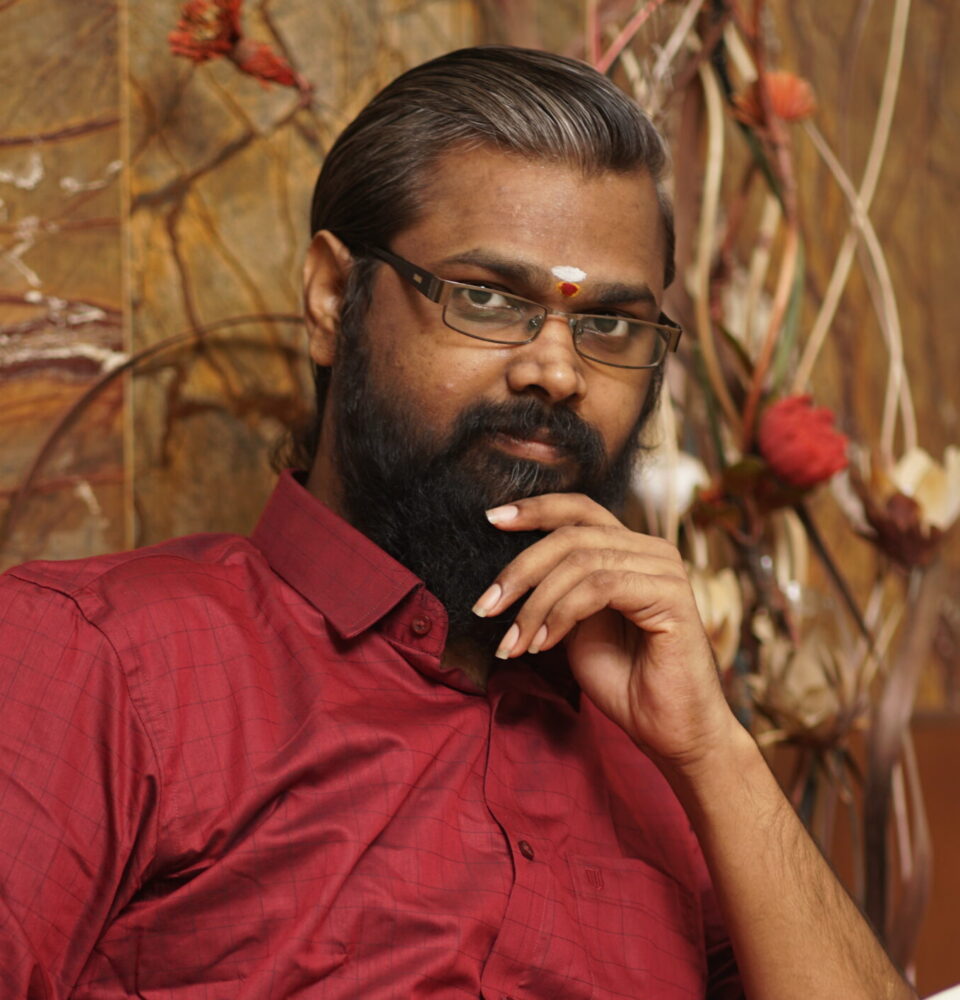
In an era marked by identity politics, cultural clashes, and growing polarization, some individuals quietly use their talents to build bridges—between communities, between faiths, and between hearts. A. Veera Ragavan, known fondly as AVR, is one such individual. From the vibrant town of Tirunelveli, Tamil Nadu, this designer-turned-visionary is shaping a new narrative—one brushstroke at a time.
From Engineering Blueprints to Artistic Vision
The story begins not in an art studio or a film set, but in a classroom filled with engineering students and the quiet hum of machines. A. Veera Ragavan, like many young men from smaller Indian towns, followed the conventional path of academics and career security. He studied engineering—methodical, precise, and structured. But behind that structured exterior was a restless creative spirit craving a different kind of expression.
His eyes were set not on circuits and code but on stories, visuals, and culture. For AVR, the turning point came when he realized that his calling wasn’t in spreadsheets and technical drawings—it was in visual storytelling. Taking a bold leap, he chose a less trodden path, driven not by formulas but by feeling.
That decision changed everything.
The Rise of a Visual Storyteller in Tamil Cinema
Over the past seven years, AVR has carved a niche for himself in the Tamil film industry—a space known for its grandeur, emotion, and deep cultural roots. He became a sought-after poster and film title designer, collaborating with directors and production houses to create visuals that don’t just promote films, but amplify their spirit.
His style? Emotionally resonant, culturally rich, and aesthetically sharp. Each poster is a canvas where characters breathe, emotions erupt, and the film’s soul finds a visual form. His work has gained widespread appreciation, not just for its technical finesse, but for the stories it tells.
But amidst the rising success, AVR felt the need to create something even more personal. Something not just cinematic—but universal.
The Funeral That Lit a Fire
Sometimes, the most profound awakenings occur in silence—in stillness. For AVR, that moment came in 2015, at the funeral of India’s “People’s President”, Dr. A.P.J. Abdul Kalam. As thousands of people gathered to bid farewell to a leader who transcended boundaries of caste, creed, and religion, AVR felt a surge of inspiration.
“I saw Hindus, Muslims, Christians… all standing shoulder to shoulder, mourning a man who belonged to everyone,” he recalls. “That moment was unity in its purest form.”
The image of collective respect and shared loss planted a seed in AVR’s mind—what if art could capture this unity? What if a symbol could speak a language of inclusion?
The Birth of a Universal Symbol
Driven by this vision, AVR set out to create something unprecedented—a logo that integrates the symbols of Hinduism, Islam, and Christianity, not to merge their identities, but to highlight their coexistence. It was a challenging task—balancing religious symbolism, cultural sensitivities, visual clarity, and emotional resonance.
The result? A logo that is nothing short of a masterpiece.
It weaves the ‘Om’, the Crescent Moon and Star, and the Christian Cross into a single form—each symbol clearly visible, yet connected in harmony. Surrounding these are the dual scripts of Tamil and English, representing regional pride and global outlook.
The color palette isn’t accidental either—it was carefully chosen to reflect peace, diversity, and sacredness. The design doesn’t scream; it invites. It doesn’t simplify the complexity of faith—it honors it.
World Book of Records Recognition—And Beyond
The logo didn’t just strike a chord locally—it found global resonance. In 2024, AVR was awarded by the World Book of Records, acknowledging the cultural and artistic significance of his work. This wasn’t just a personal milestone—it was a moment of pride for his community, his industry, and anyone who believes in the power of unity.
Yet, for AVR, accolades are never the finish line.
“Recognition is wonderful,” he says, “but the real reward is when someone tells me that the design made them feel seen, included, and respected.”
That belief keeps him grounded—and constantly evolving.
Designing with Purpose in a Divided Age
What makes AVR’s journey so compelling is not just his talent—it’s his intent. In a digital world where design often leans toward the superficial—chasing likes, trends, and virality—AVR’s work is deeply rooted in meaning. For him, every line carries weight, every composition tells a story.
He doesn’t just design for the eye. He designs for the heart.
Through his studio, AVR continues to work with filmmakers, social leaders, NGOs, and independent thinkers—lending his artistic vision to causes and messages that matter. Whether it’s a film poster, a cultural campaign, or a symbolic artwork, his commitment to integrity in design remains uncompromised.
Inspiring the Next Generation
AVR’s story is fast becoming a guiding light for aspiring creatives, especially from small towns and non-traditional backgrounds. He’s vocal about the need for originality, cultural pride, and empathy in artistic work.
His message to young designers and storytellers is clear:
“Create from a place of truth. Don’t chase trends—chase meaning. Let your art speak for what you believe in. And remember, unity is not a trend. It’s a timeless necessity.”
A Legacy of Light and Lines
From Tirunelveli to the Tamil film industry to international recognition, A. Veera Ragavan’s journey is not just a story of success—it’s a story of purpose. At a time when the world desperately needs bridges, AVR has quietly built one—through art, through design, and through a logo that reminds us of our shared humanity.
In his work, we don’t just see religious symbols. We see hope. We see a man’s belief that art can heal. That it can bring people together. That it can outlive hate and sow seeds of harmony.
And in a world often divided by labels, that’s a vision worth celebrating.

